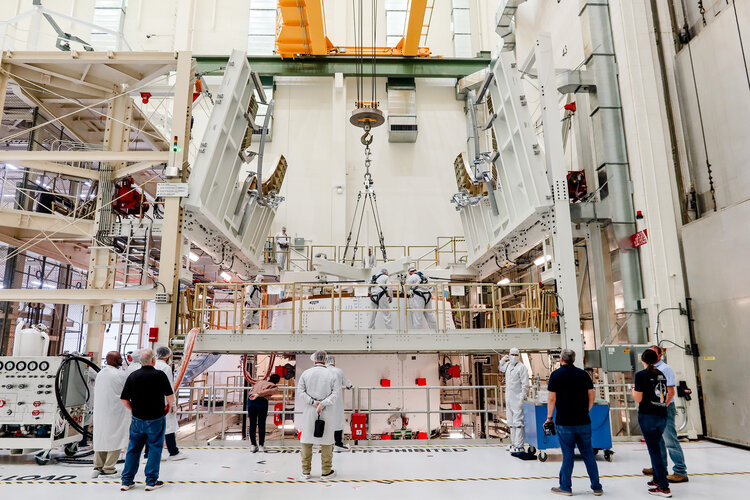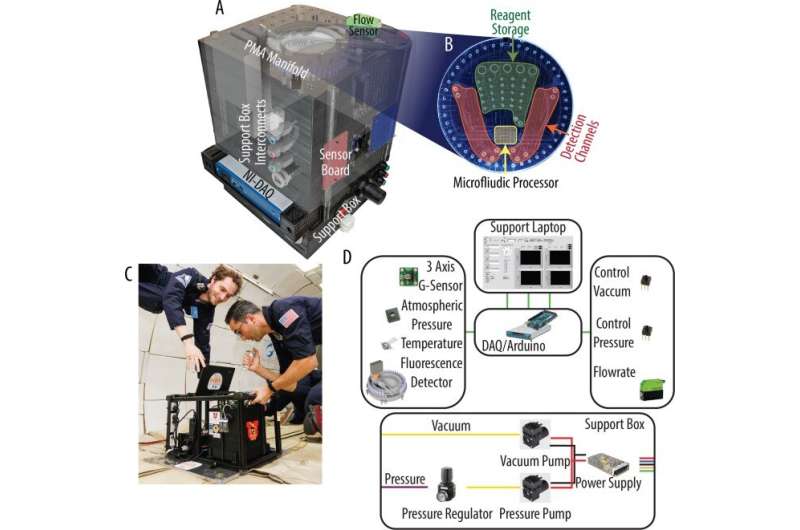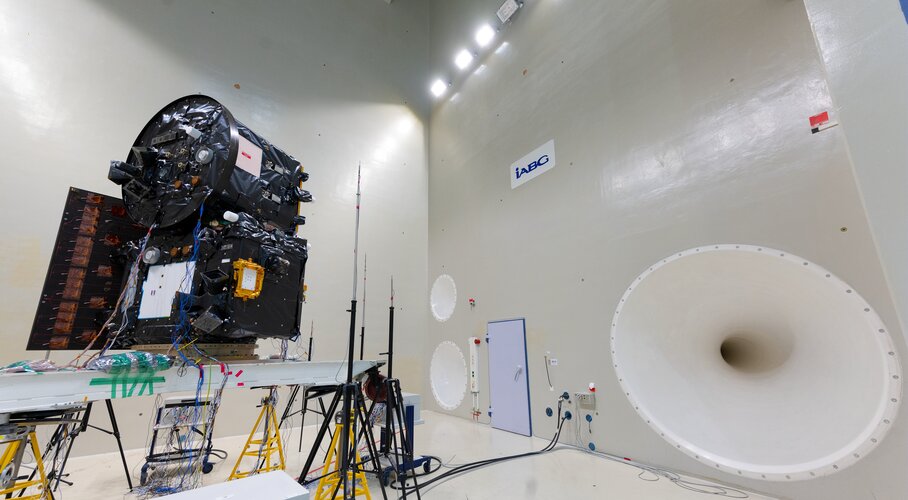
Copernical Team
Ariane 5 flight VA261: launch delay

The Ariane 5 flight scheduled for 16 June has been delayed. Launch operator Arianespace announced on Twitter: "It has come to light that there is a risk to the redundancy of a critical function on the Ariane 5. Consistent with safety requirements, Arianespace has decided to postpone the roll-out of the VA261 launch vehicle. Analyses are underway to determine a new launch date."
More information to come.
Paving the way for a new era in space: ESA's ambitions at the Paris Air Show 2023

The Paris Air Show, one the oldest and largest aerospace events in the world, is back at Le Bourget from 19 to 25 June. ESA is taking part to showcase the Agency’s latest accomplishments, highlight upcoming endeavours and present what’s next in the European Space Agency’s long-term ambitions. There will also be an intense week-long programme of lively panels and sessions, some of which will be livestreamed on ESA Web TV and Twitter. So, whether you are in Paris or not, you can join us at Le Bourget by watching our broadcasts!
Handing over European Service Module for Artemis II

Microfluidics in space to detect extraterrestrial life signatures and monitor astronaut health

Winners unravel Euclid #CosmicMystery with creative inspiration

Over 90 participants were up for the challenge to visualise just how much we know and don’t know in the Universe and explain the #CosmicMystery that ESA’s Euclid mission will soon begin to investigate. From songs, crochets and animations to apparel, paintings and baked goods, the creativity of participants amazed the judges.
Carbon monoxide from fires in Canada
 Image:
As climate change increases the risk of wildfires across the globe, the spate of fires that hit Canada in May and June suggest that 2023 is on course to be the country’s worst fire season to date. These fires not only
Image:
As climate change increases the risk of wildfires across the globe, the spate of fires that hit Canada in May and June suggest that 2023 is on course to be the country’s worst fire season to date. These fires not only Sun-watching Proba-3 formation flyers tested for take-off

ESA’s pair of Sun-watching Proba-3 satellites have been placed in take-off configuration, one on top of the other, for testing in simulated launch and space conditions at IABG in Germany, ahead of their planned lift-off next year.
Gemini North detects multiple heavier elements in atmosphere of hot Exoplanet
 Astronomers using the Gemini North telescope, one half of the International Gemini Observatory operated by NSF's NOIRLab, have detected multiple rock-forming elements in the atmosphere of a Jupiter-sized exoplanet, WASP-76b. The planet is so perilously close to its host star that rock-forming elements - such as magnesium, calcium, and nickel - become vaporized and dispersed throughout its scorch
Astronomers using the Gemini North telescope, one half of the International Gemini Observatory operated by NSF's NOIRLab, have detected multiple rock-forming elements in the atmosphere of a Jupiter-sized exoplanet, WASP-76b. The planet is so perilously close to its host star that rock-forming elements - such as magnesium, calcium, and nickel - become vaporized and dispersed throughout its scorch DESI data sheds more light on 3D map of cosmos, study of universe
 Dr. Mustapha Ishak-Boushaki, a theoretical astrophysicist at The University of Texas at Dallas, has spent his career seeking answers to some of the universe's greatest mysteries, including why the expansion of the universe seems to be accelerating and whether gravity behaves differently beyond our closest cosmic neighbors.
To study these and other questions, a large collaboration of scient
Dr. Mustapha Ishak-Boushaki, a theoretical astrophysicist at The University of Texas at Dallas, has spent his career seeking answers to some of the universe's greatest mysteries, including why the expansion of the universe seems to be accelerating and whether gravity behaves differently beyond our closest cosmic neighbors.
To study these and other questions, a large collaboration of scient A Geologist in a Rock Shop: Sols 3859-3860
 It appears that Curiosity's recent traverse has turned a new leaf as this is the second successful drive after lots of slipping and sliding. The new workspace is full of goodies for us to target and fill our 2-sol plan with, in addition to new perspectives of features off in the distance. The rover passed the "Slip Risk Assessment Process" (SRAP) which means we can unstow the arm and use its ins
It appears that Curiosity's recent traverse has turned a new leaf as this is the second successful drive after lots of slipping and sliding. The new workspace is full of goodies for us to target and fill our 2-sol plan with, in addition to new perspectives of features off in the distance. The rover passed the "Slip Risk Assessment Process" (SRAP) which means we can unstow the arm and use its ins 
